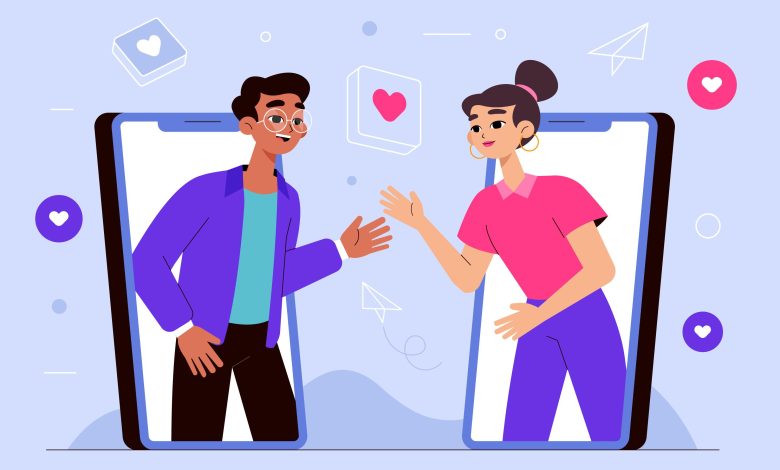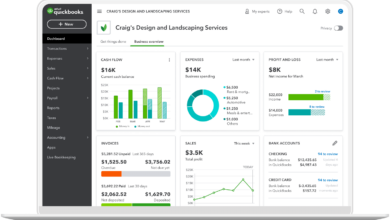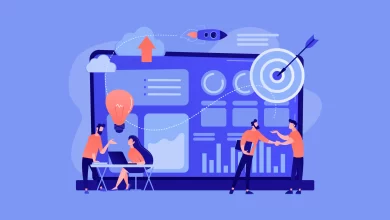How will Web3 Change How Social Media is Used in the Future?

People are essentially social beings. In the 1980s, people wrote letters to pen pals who lived on different continents. In the 1990s, dial-up internet and simple one-dimensional websites were introduced. People have always looked for and used new ways to talk to each other. By the middle of the 2000s, we had heard of Web2 and social media networks, which were both sleek and easy to use. All of a sudden, the internet gave people a quick way to talk back and forth, and people loved it.
Now is the time to start a new time. And unless you’ve been living under a rock, you’ve probably heard of the “metaverse” or “Web3,” which have been talked about as much as the name “Kim Kardashian.” Even though the technology has been around for a while, it is now becoming more popular because Facebook changed its name to Meta. Citi Bank says that by 2030, the metaverse could be worth between $8 trillion and $13 trillion and have as many as 5 billion users.
Social media has become less social over time.
Social media has become so popular because it lets us show who we are and makes us feel like we are part of a group. We can’t deny that platforms like Instagram, Facebook, Twitter, and YouTube have made our lives better in many ways. We can talk to friends and family who live far away, find recipes and fashion ideas, and use our creativity by making and sharing photos and videos.
It almost seemed too wonderful to be true that social media was free to use. But it was Andrew Lewis who said, “If you’re not paying for it, you’re not the customer; you’re the product being sold.”
In 2018, the Information Commissioner’s Office (ICO) found that Facebook broke data protection laws by not keeping users’ personal information safe and by letting a political consulting firm, Cambridge Analytica, collect the data of up to 87 million people without their permission.
The Social Dilemma, a Netflix documentary about Twitter’s whistleblower, came out right after this scandal. It showed just how addicting social media could be. The algorithms are made to keep you on their platforms by showing you more of what you want to see. When you get new “follows” or “likes,” the “love drug” dopamine is released in your brain when you hear the “ding.”
Instead of talking to our partners, we lay in bed and scroll through Facebook in silence. Instead of talking to our friends at the dinner table, we take pictures of our food and post them to Instagram Stories.
When you think about all of this, social media suddenly doesn’t seem very “social.”
PhaseZero releases CxAnalytics 1.0, which gives customers real-time analytics and insights to help them make high-impact, fact-based decisions.
Web3 will cover everything that social media doesn’t do.
Web3 will change the way we talk to each other. The Web3 is built on blockchain technology and was made to be community-driven, ad-free, and self-monetized. Instead of large corporations owning all the content and acting as gatekeepers, it works as a group of decentralised networks. called the
Metaverse or Multiverse is an evolution and mix of virtual reality, augmented reality, gaming, cryptocurrencies, social media, and more. And, unlike the way social media works now, where users have no say, no one will have control over our data and be able to use it for their own gain. It’s more open to participation. For example, users can sometimes get tokens for using the internet, and those who have tokens can have a say in how the network is run.
The “social” part of “social media” will be brought back by Web3.
Instead of the 2D interactions, we have now, web3 social media website development and the internet will continue to merge our real and virtual worlds into a more immersive experience. We carry our phones and laptops like they are an extension of our arms. In the future, however, we may be able to go into virtual spaces with glasses or contact lenses, which would be an improvement over the heavy VR headsets we see now.
With VR, the 3D experience is more real. We can go kayaking with friends without leaving our couches, or we can meet new people at the AltSpace firepit, where we can read each other’s body language as we talk, laugh, and listen to the fire. Our brains are very interesting, and because of this, you might even be fooled into thinking that you feel real warmth against your body.
Putting ourselves out there.
Web3 has features that let users change their avatar’s skin, hair, and clothes to match their mood. You can also buy, sell, and wear outfits that are so creative and outlandish that you couldn’t make them in real life.
Getting people back together.
We will get to know each other through the metaverse’s worlds, spaces, and activities. Web3 lets us connect, whether we are going to Burning Man in VR or are part of an NFT collection and the Discord community that goes with it.
Giving the creators back their power
Whether you buy a piece of land on Decentraland or make and sell cool jewellery as NFTs, the power is now back in the hands of the user.
Let’s learn from the kids of today who have grown up with technology. They are used to spending real money on things like clothes for their Roblox avatars and game tokens. Trick-or-treating in the metaverse next year isn’t a big leap for them to make in their minds.
Don’t forget that Web3 is just the next step in the internet. And the immersive experience that’s in store for us is exciting and full of good things that smart users can do.




